Introduction
CRM and sales automation are revolutionizing the way businesses operate, offering practical solutions to the Director of Operations Efficiency’s challenges. These technologies are streamlining sales and marketing processes, reducing time spent on repetitive tasks, and enhancing productivity. With the integration of AI, businesses are leveraging predictive analytics and machine learning to deepen customer relationships and personalize engagements.
Small businesses are embracing sales automation software to enhance sales strategy and drive revenue. Real-world case studies demonstrate the tangible benefits of CRM and sales automation across various industries. In the manufacturing sector, automation is tackling the complexity of product portfolios and improving customer satisfaction.
Integrating CRM with marketing automation is vital for seamless lead transition and personalized marketing campaigns. CRM automation enhances efficiency by automating tasks and workflows, freeing up time for strategic initiatives. It also ensures data accuracy, unlocks valuable insights, and supports informed decision-making.
Implementing CRM and sales automation requires evaluating business needs, selecting the right tools, migrating data, and providing comprehensive training. By following best practices, businesses can fully harness the power of CRM and sales automation, optimize efficiency, and drive business growth.
Benefits of CRM and Sales Automation
CRM and sales automation are revolutionizing the landscape of company operations, delivering a potent impact of efficiency and scalability. With the right tools in place, companies are tapping into streamlined sales and marketing processes, reducing the time spent on repetitive tasks, and enhancing productivity across the board. A unified CRM system not only improves internal workflows but also elevates the customer experience by ensuring consistent, high-quality interactions across all touchpoints. The significance of a seamless customer journey becomes clear when considering that 62% of customers might share a negative experience with others, while a staggering 66% of millennials demand real-time interactions. Additionally, 40% of consumers will avoid enterprises that don’t support their preferred communication channels, emphasizing the need for a CRM that can capture and respond to these diverse consumer preferences.
The incorporation of AI in CRM is propelling enterprises into a new era of market strategy, with predictive analytics and machine learning leading the charge in customer data utilization. These advancements are not only streamlining operations but are also cultivating deeper customer relationships through more personalized and timely engagements. Small enterprises, especially, are adopting AI tools, with 42% of micro-enterprises utilizing this technology to remain competitive. Software for streamlining sales has become an essential resource for small businesses looking to enhance their sales strategy and boost revenue.
The tangible effect of customer relationship management and sales streamlining is apparent in documented examples from different sectors. For instance, the AFL experienced the transformative power of data consolidation in boosting grassroots participation, while Delivery Hero overcame the challenge of account lockouts, which had previously led to significant downtime for its large workforce. These examples demonstrate the concrete advantages of adopting CRM and sales streamlining: from enhanced grassroots involvement to enhanced IT service delivery, the benefits reach across a wide range.
In the manufacturing industry, the use of technology is addressing the intricacy of product portfolios, aiding sales representatives in providing accurate quotes and handling multiple manual tasks with improved efficiency. This change is crucial as manufacturing representatives struggle to manage multiple clients, product catalogs, and manual processes, often resulting in errors and customer dissatisfaction. By automating these tasks, companies are witnessing fewer delays, chargebacks, returns, and, most importantly, happier customers. Moreover, recognition for user-friendly sales management platforms like Salesflare underscore the industry’s acknowledgement of tools that provide simplicity, rapid configuration, helpful customer support, and substantial ROI.
Ultimately, CRM and sales optimization serve as foundations for contemporary enterprises seeking success in a competitive environment. By adopting these technologies, companies are not only streamlining their operations but are also setting the stage for sustained growth and customer satisfaction.
Key Features of CRM Automation
CRM is transforming the way businesses manage their operations and engage with customers. At the heart of this transformation are key features like lead management, which streamlines the process of tracking and nurturing potential clients. This not only saves precious time but also enhances the accuracy of your sales funnel. Likewise, contact management becomes effortless with CRM technology, as it carefully captures and organizes every detail about your contacts, ensuring that all interactions are personalized and timely.
The effectiveness of CRM shines in opportunity tracking, enabling companies to pinpoint and pursue promising leads with precision. This targeted approach is supported by the latest AI-driven tools that offer deep insights into customer behavior and market trends, driving strategic decision-making. Furthermore, sales forecasting is enhanced through CRM technology, providing a clear vision of future sales and helping businesses to prepare effectively.
These features are not just theoretical benefits; they are practical solutions to real-world problems. For example, the use of technology has proven its value in the email outreach process, where it has significantly reduced the time and resources required to obtain new contacts. Moreover, companies such as Delivery Hero have utilized technology to minimize the downtime caused by locked-out accounts, saving numerous hours every month that were previously wasted in manual recovery procedures.
The implementation of CRM automation is not just a fad; it is a strategic decision that is shaping the future of marketing and efficiency. The insights provided by Pipedrive CEO Dominic Allon highlight the industry’s transition towards AI-driven innovations that enhance the crucial human interaction in commerce. With tools that facilitate improved management and a more effective sales process, businesses are positioned to flourish in an increasingly competitive landscape.
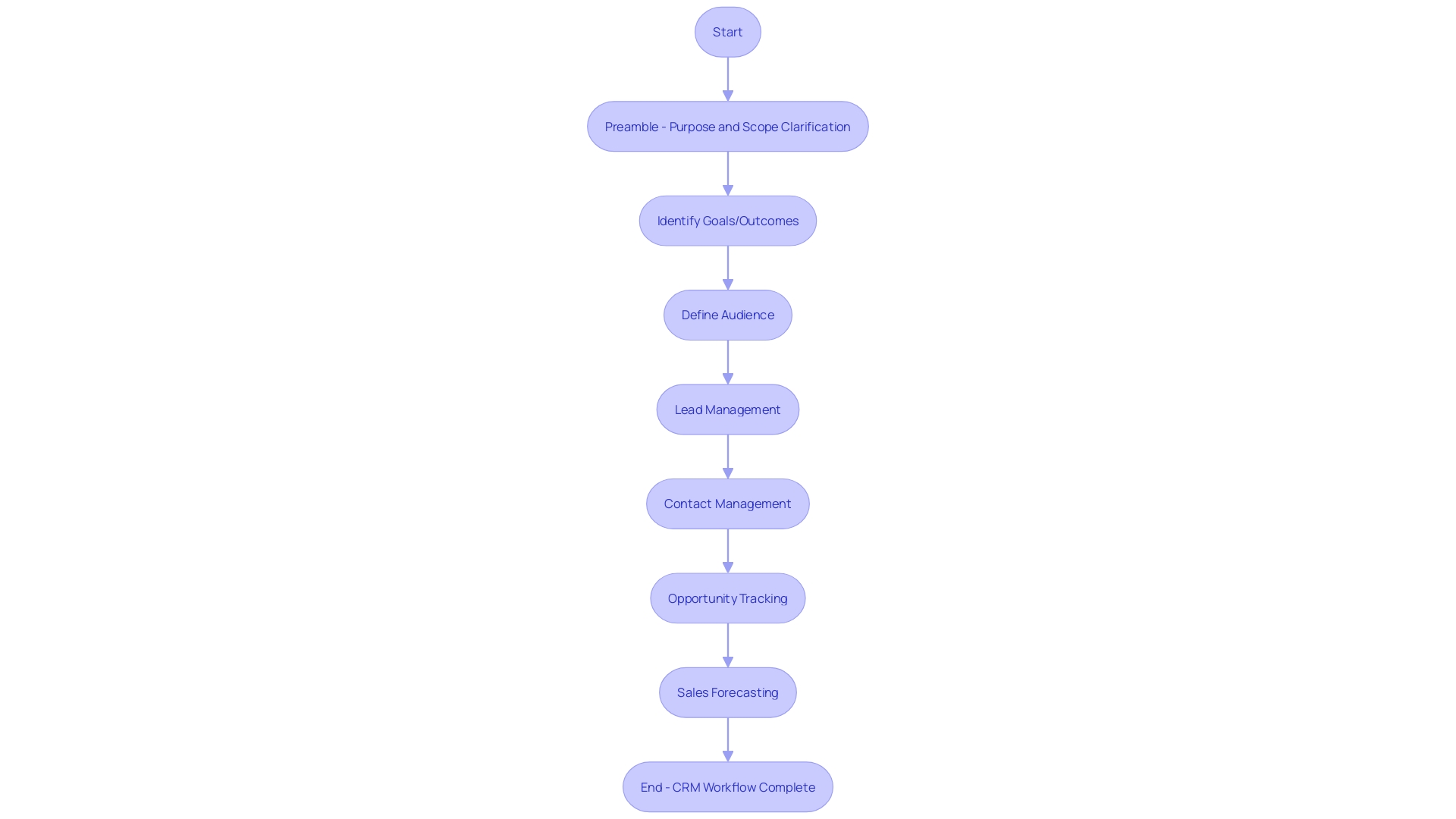
How CRM and Sales Automation Enhance Efficiency
CRM and sales management are increasingly becoming the key components of sales and marketing efficiency. By automating repetitive tasks, these tools free up time for teams to focus on more strategic initiatives. For example, the history of Centroplan, a part of the Pohlen Gruppe with a legacy spanning over 125 years, emphasizes the profound effect of sales streamlining. The company faced a significant challenge with time-consuming manual work, particularly in creating offer documents. Implementing document automation within their Salesforce ecosystem allowed them to expedite the sales cycle and enhance their sales team’s productivity.
Furthermore, embracing CRM platforms like Salesforce’s Customer 360 can lead to interconnected data across systems and devices, forming a comprehensive customer view. This integration is not just about technology; it’s about creating a seamless and consistent customer experience across various communication channels, such as phone, email, and social media. Customization options within these platforms enable organizations to tailor workflows and interfaces that best fit their operational needs, thereby streamlining processes and improving efficiency.
As highlighted by Pipedrive CEO Dominic Allon, the advent of AI-driven innovations has brought about remarkable growth and efficiency in business operations. In spite of this technological advancement, the human factor remains indispensable in marketing and advertising. The strategic use of sales enablement resources, as advised by industry leaders, can significantly accelerate the process by equipping teams with the right tools and information. In the end, incorporating CRM and sales management into organizational processes not only enhances operational effectiveness but also promotes the flexibility and durability of sales teams in a changing market environment.
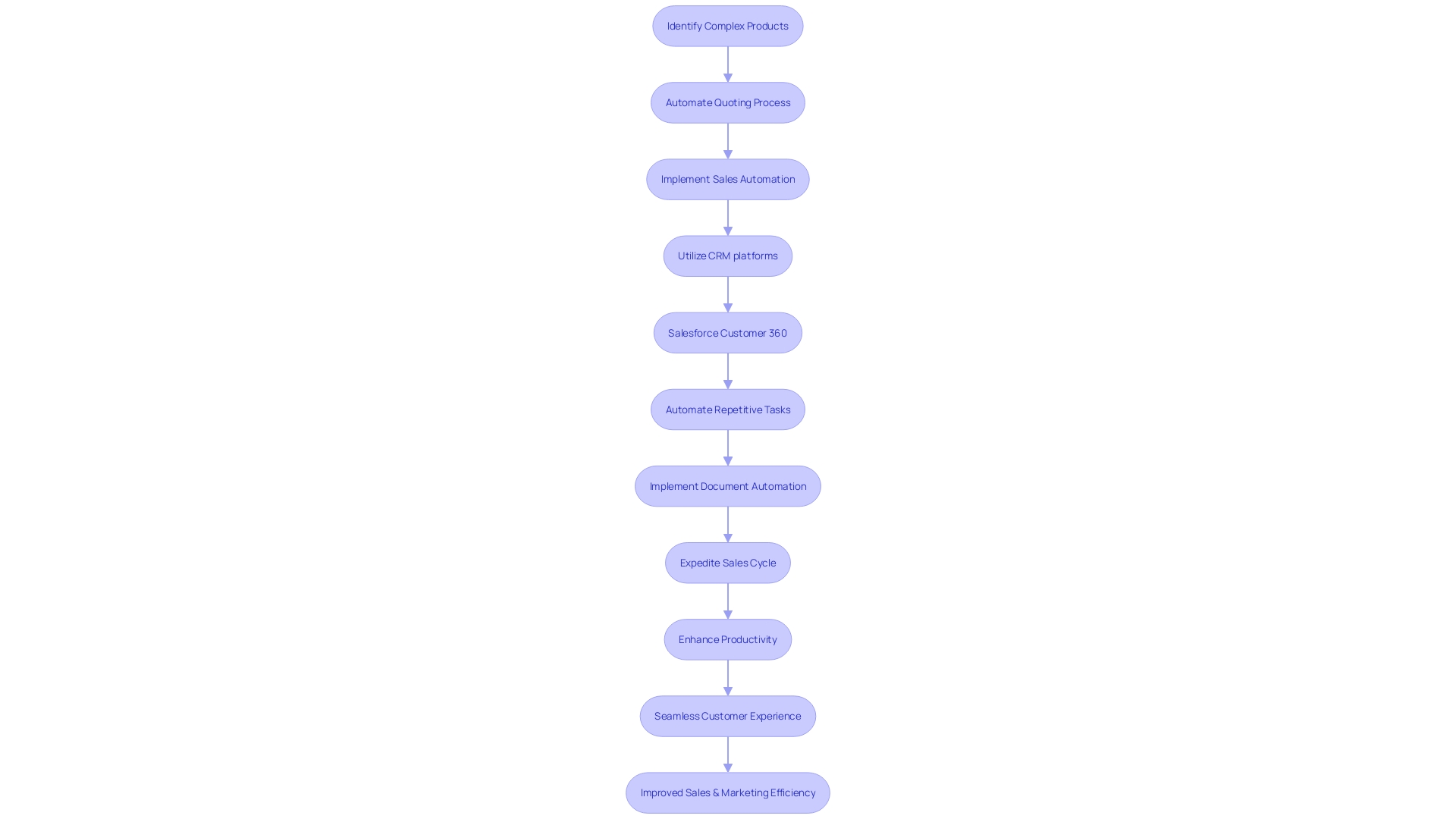
Streamlining Sales Processes with CRM
Customer relationship management (CRM) has become an essential tool for manufacturing enterprises and businesses with intricate sales procedures. By utilizing the capabilities of automation, companies can efficiently handle their extensive product portfolios and minimize the risk of human error in pricing and marketing duties. Automation streamlines lead management, ensuring that follow-ups are scheduled and executed without manual intervention, thus enhancing the overall pipeline management.
Manufacturers frequently manage numerous customers, extensive catalogs, and a variety of manual selling activities, which can result in expensive errors such as delays and chargebacks. Customer relationship management (CRM) addresses these difficulties by offering a systematic approach to selling that reduces mistakes and enhances customer contentment. For instance, SugarCRM’s solutions concentrate on aiding businesses in enhancing their process efficiency through strategic sales.
Recent trends in the Australian manufacturing sector highlight the importance of integrating CRM systems across supply chains for improved efficiency. Companies such as Speedpanel have embraced these advancements to revolutionize their industry. Furthermore, data shows a notable change towards workflow mechanization, with an astonishing 94% of business leaders preferring a consolidated system for application integration and process mechanization.
The implementation of CRM is not just about the technology but also about the strategy that accompanies it. As Clate Mask, CEO of Keap, puts it, “You can throw a piece of software at a problem; that’s not going to solve it. You need the strategy and the services to go with it.” This comprehensive approach to streamlining empowers small businesses to harness the full potential of CRM tools across all operations, driving growth and efficiency.

Integrating CRM with Marketing Automation
To excel in the current data-centric setting, it is essential for marketing and sales teams to combine customer relationship management (CRM) and marketing technology. The synergy between these two systems enables a smoother transition of leads from marketing to sales, ensuring no opportunity is missed. Parkhotel Adler, a historic hotel with a legacy of 16 generations, found that their outdated technology stack was impeding their ability to engage in modern marketing strategies. By adopting CRM technology, they could have streamlined their processes for segmentation and personalization without the system crashes that plagued their legacy database tool.
Utilizing CRM technology enables more personalized marketing campaigns by leveraging a rich repository of customer data. This targeted approach creates a cohesive journey for the customer, exemplified by Apple’s integrated marketing communications strategy, which maintains a consistent look and feel across all platforms. The result is a seamless customer experience from the first online ad they see to the follow-up email after a purchase, reflecting the kind of integrated strategy that modern businesses need.
Furthermore, CRM mechanization offers a organized selling procedure that can be effortlessly pursued and duplicated. A solid sales process, supported by CRM, involves stages from lead generation to contact, qualification, proposal, and finally, winning the deal. Data migration into a singular CRM platform is a crucial first step in achieving a unified view of customer information, which is essential for security and efficient lead management.
Businesses must confront the challenge of managing and making sense of vast amounts of data. Investing in powerful CRM and marketing tools, as well as bringing in data experts or upskilling current teams, can help convert overwhelming data into actionable insights. With a well-integrated system, companies can expect to see improved productivity, lower costs, and a more customer-centric approach to their business operations, driving growth and productivity across the board.
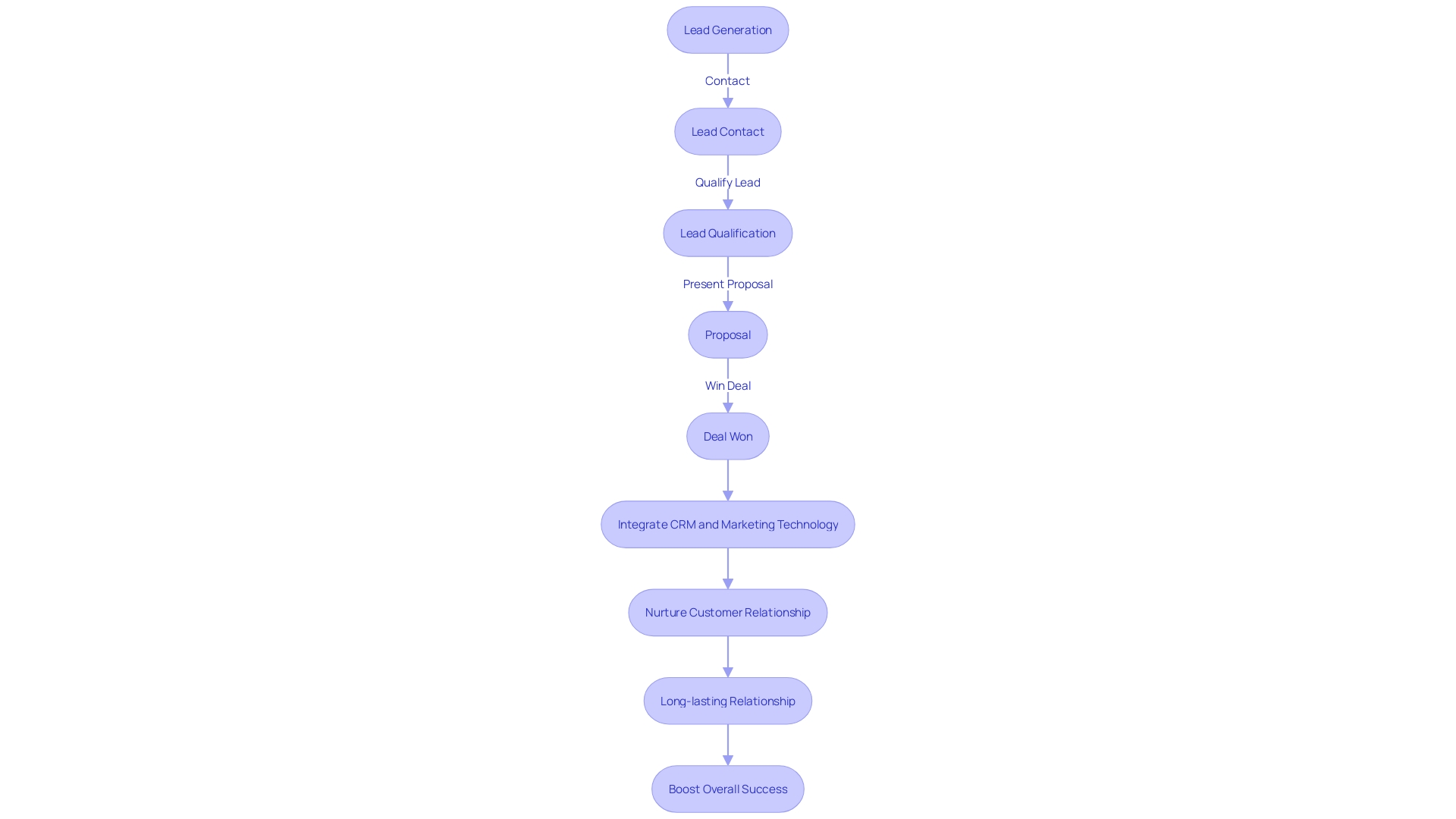
Automating Sales Tasks and Workflows
Customer relationship management streamlines tasks and workflows, resulting in significant improvements in productivity. For manufacturing enterprises with complex product portfolios, where sales representatives manage multiple clients and extensive catalogs, automation is crucial. It reduces human error and delays, preventing chargebacks, returns, and customer dissatisfaction. By automating repetitive tasks such as email campaigns, task management, and overall workflow, companies can ensure a more efficient process.
Recent developments in CRM technology, such as Microsoft Dynamics 365’s 2024 release, offer promising enhancements for businesses. These tools come equipped with capabilities that include automated lead scoring, personalized email marketing, and seamless integration with other software. This is particularly relevant given that, according to Pipedrive’s Annual State of Sales and Marketing report, small companies are increasingly adopting AI tools to bolster their sales and marketing efforts.
Furthermore, statistics show a widespread tendency to adopt workflow streamlining across industries. An overwhelming 94% of executives prefer a unified platform for integrating apps and automating processes. The push for mechanization is further emphasized by findings that over one-third of businesses have mechanized at least five divisions, and 45% have corporate teams engaged in the mechanization process.
Implementing CRM platforms for sales is not only focused on effectiveness; it involves creating accurate, customer-centric approaches. Ai’s role in account planning allows for the analysis of historical data, revealing insights that inform tailored strategies. Likewise, the challenging process of lead generation is transformed through the use of technology, which can rapidly identify leads with greater conversion potential, saving time and enhancing the chances of successful engagements.
In order to stay competitive and develop strong customer relationships, it is now essential to incorporate CRM integration into sales and marketing strategies as we progress. The time of manual, mistake-prone sales processes is being overshadowed by an automated, data-driven approach that guarantees to reshape the way organizations interact with their clientele.

Data Accuracy and Analytics with CRM Automation
Utilizing CRM technology is crucial for ensuring accuracy in data and unlocking valuable insights that drive efficiency and growth. It starts with evaluating current data management practices; for instance, Truthset works with organizations to diagnose and validate their data’s precision for improved outcomes. Scott McKinley of Truthset highlights that more accurate data drives financial and other results, emphasizing its transformative potential.
CRM automation addresses the concern of data accuracy head-on. Techniques such as data cleansing in Salesforce, which entails correcting or removing corrupt records, are fundamental to maintaining data integrity. This process not only rectifies inaccuracies but also enriches data, ensuring that the database supports effective decision-making and enhances customer relationships.
Moreover, a study revealing significant variations in data accuracy across providers, with match rates ranging from 32% to 69%, underscores the necessity for a reliable data cleansing process. Inaccurate data is costly, wasting billions annually and leading to poor decision-making.
But it’s not just about cleaning data; it’s about what you do with it. Analytics and data science news indicates that companies are leveraging advanced CRM analytics for a competitive edge. For instance, Alteryx was acquired for $4.4 billion, demonstrating the high value placed on analytics tools.
Moreover, services like Portera’s Green Tick offer a symbol of reassurance for data quality, ensuring that data is accurate at every reporting stage and paving the way for improved organizational decisions. With a focus on validation and management, such services prevent the costly consequences of poor data quality, such as lower revenue and higher operational costs.
Ultimately, the integration of AI-powered insights into CRM systems empowers organizations with the analytics needed for informed decision-making. By ensuring data accuracy and providing comprehensive analytics, CRM streamlining is a cornerstone of operational efficiency and strategic growth.
Implementing CRM and Sales Automation for Business Growth
Choosing and deploying the appropriate CRM and sales automation tools can be transformative, driving your company’s growth by improving efficiency. This entails multiple essential steps, beginning with assessing your needs to ensure that the CRM system aligns with your objectives. Reflect on the goals you wish to achieve, be it expanding your product lines or increasing revenue, and consider how CRM can support these ambitions. Engage with department heads and team members to understand their requirements and anticipate how a CRM system could enhance their performance.
Once you’ve assessed your needs, the selection process begins. Survey the market for CRM software that serves companies of your size, with an emphasis on solutions that provide adaptability and the capacity to customize your platform. Tools like NetSuite CRM, Creatio customer relationship management (CRM), and Act! CRM are designed to foster lasting customer relationships and streamline day-to-day tasks efficiently, often supporting multiple languages and catering to small to mid-size businesses.
The data migration phase is critical; it involves transferring your data from siloed sources like emails and spreadsheets to a unified CRM system. This step was pivotal for organizations like the AFL, which sought to work more effectively with schools and community organizations to increase grassroots participation. By centralizing data, the AFL improved its ability to track and understand program effectiveness.
Training your team is essential for successful implementation. Provide comprehensive training to ensure a smooth transition and encourage adoption. Evaluate the effectiveness of tools for enhancing sales processes, focusing on capabilities that enhance productivity and expansion, such as anticipatory data analysis and lead administration.
Finally, change management is a vital aspect of the process. As with the case of Ty, a soft toy manufacturer, replacing a 15-year-old communication system with a modern, cloud-based solution required careful planning and execution. The shift to a new customer relationship management and sales process enhancement platform will require a comparable level of dedication to enhance data analytics and adaptability for your teams.
By adhering to this manual, which is influenced by practical instances and specialist perspectives, you can successfully execute CRM and sales mechanization to fulfill the changing requirements of eco-friendly production and stimulate business expansion.
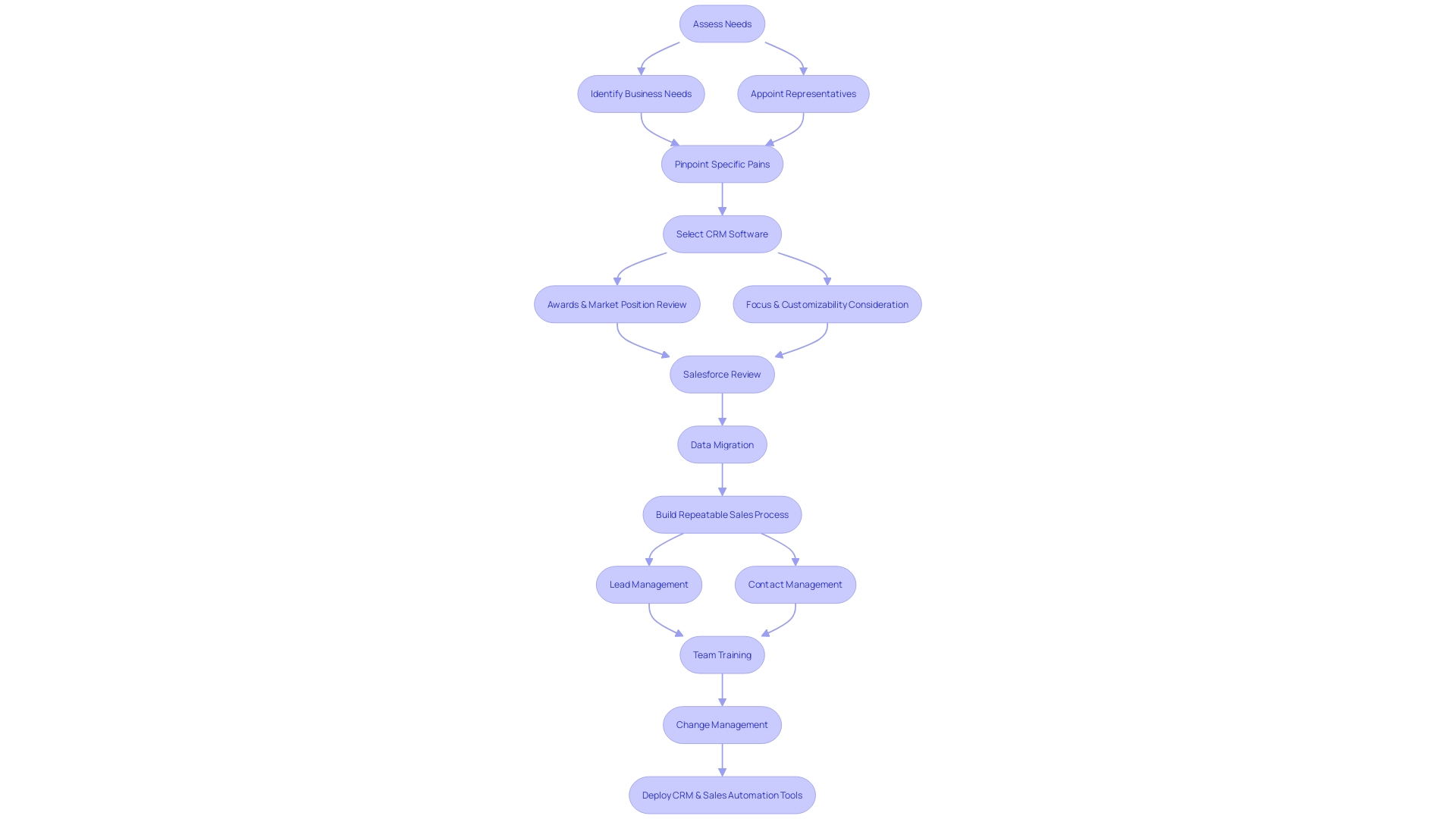
Best Practices for CRM and Sales Automation Adoption
To fully utilize the potential of CRM and automation in customer relationship management, a strategic approach is vital. It starts with creating a transparent sales procedure that directs leads from the first expression of interest to completed agreements, covering stages like contact, evaluation, and proposal. By incorporating CRM tools, organizations can effectively manage customer relationships and stimulate revenue growth. For example, outlining your business process could follow a path from recognizing potential leads to effectively closing them as customers. Creating a roadmap that aligns with this process, while also engaging key stakeholders, is vital for fostering user adoption and ensuring a smooth implementation. Additionally, it is crucial to continuously refine these processes, taking cues from successful examples like the AFL’s initiative to increase grassroots participation by efficiently coordinating with schools and community organizations using a unified data system. Furthermore, embracing AI technology can provide predictive analytics and customer insights, transforming the way companies interact with their clients and manage leads. These top practices not only optimize operations but also contribute to a substantial boost in productivity, as emphasized in a recent report by Pipedrive CEO Dominic Allon, highlighting that AI innovations have been instrumental in propelling growth. By prioritizing a well-defined sales process, involving stakeholders, and leveraging AI, businesses can optimize their CRM and sales automation efforts to achieve greater efficiency and profitability.
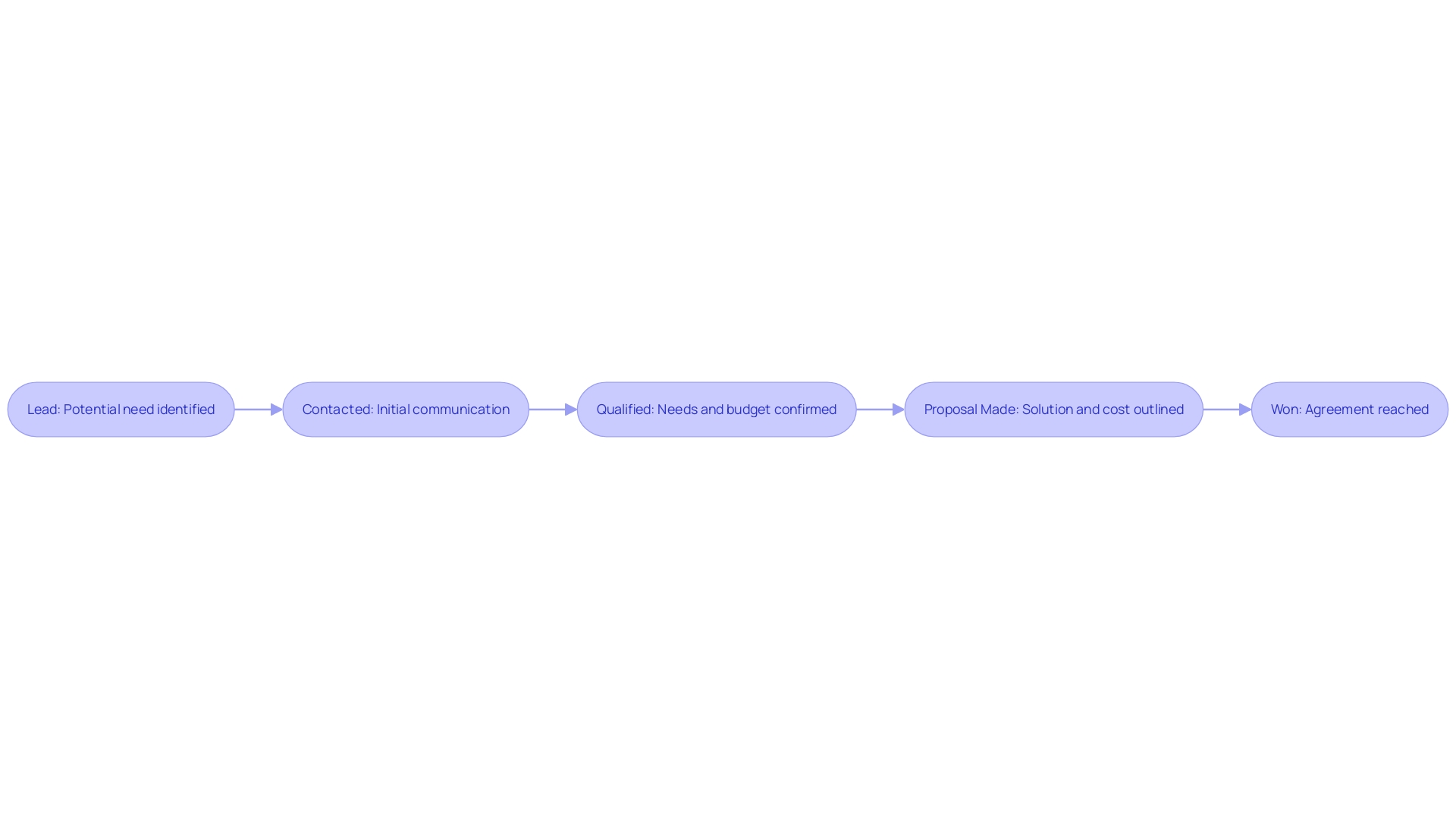
Conclusion
In conclusion, CRM and sales automation offer practical solutions to streamline sales and marketing processes, reduce repetitive tasks, and enhance productivity. By integrating AI, businesses deepen customer relationships and personalize engagements. Real-world case studies across various industries demonstrate the tangible benefits of CRM and sales automation.
Implementing CRM and sales automation requires evaluating business needs, selecting the right tools, migrating data, and providing comprehensive training. By following best practices, businesses can optimize efficiency and drive growth.
Key features of CRM automation, such as lead management, contact management, opportunity tracking, and sales forecasting, streamline processes and drive strategic decision-making. Integrating CRM with marketing automation ensures a seamless transition of leads and personalized campaigns.
CRM automation transforms sales processes, reducing human error and improving customer satisfaction. It streamlines tasks and workflows, freeing up time for strategic initiatives. The adoption of CRM automation is a strategic move that shapes the future of sales and marketing efficiency.
Integrating CRM with marketing automation is crucial for personalized marketing campaigns and a cohesive customer journey. A well-integrated system improves productivity, lowers costs, and fosters a customer-centric approach.
CRM automation streamlines tasks and workflows, leading to significant productivity gains. Recent developments in CRM technology offer promising enhancements, including AI-driven tools for deep insights and efficient sales processes.
Harnessing CRM automation ensures data accuracy and unlocks valuable insights. Data cleansing and enrichment are crucial for maintaining data integrity. Analytics tools provide a competitive edge and support informed decision-making.
Selecting and implementing the right CRM and sales automation tools is transformative for business growth. It involves evaluating business needs, selecting flexible platforms, migrating data, providing comprehensive training, and managing change effectively.
By adopting CRM and sales automation, businesses thrive in a competitive landscape, streamline operations, and drive growth and customer satisfaction.

